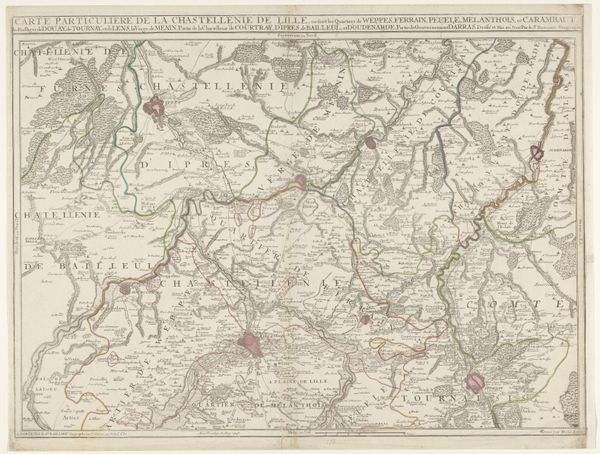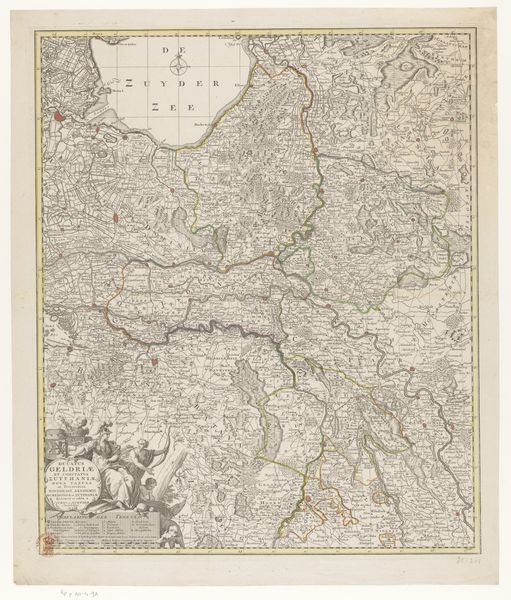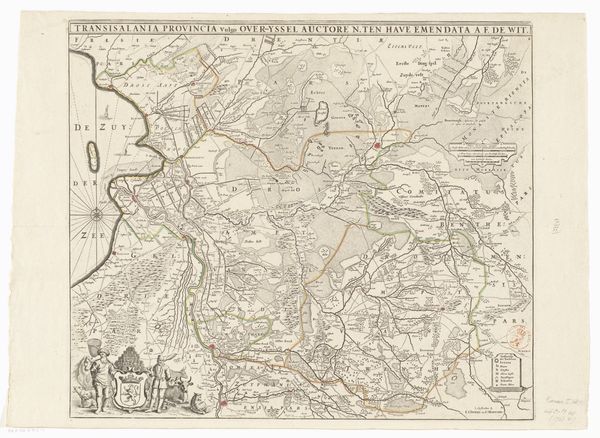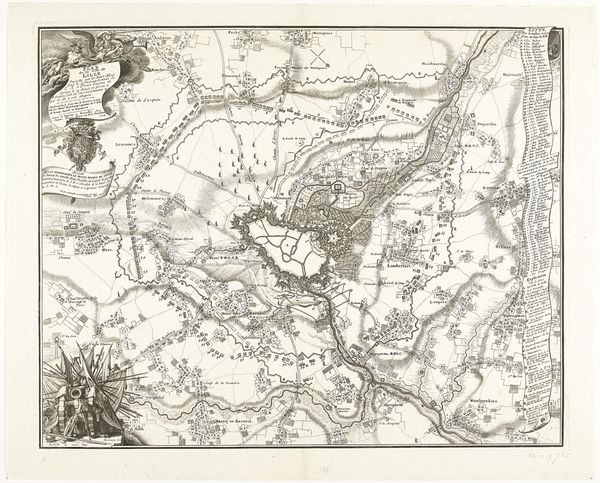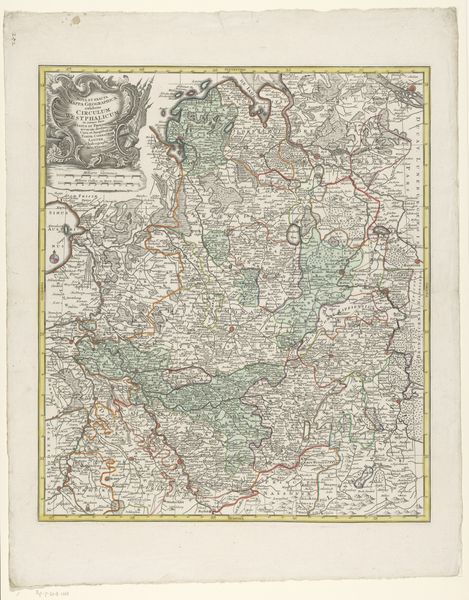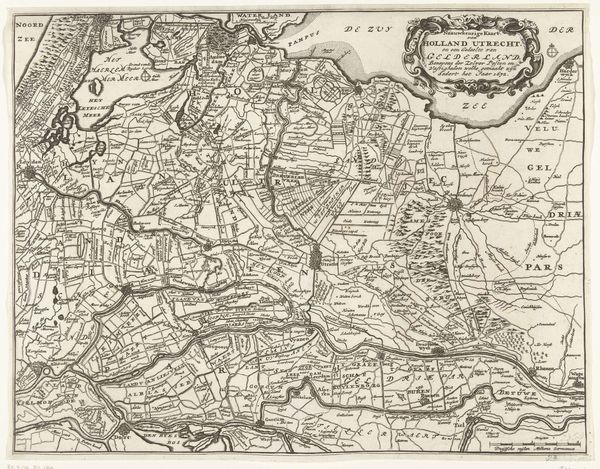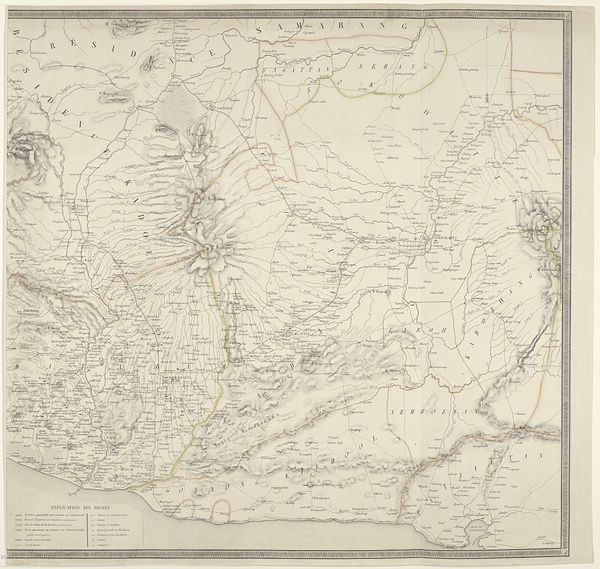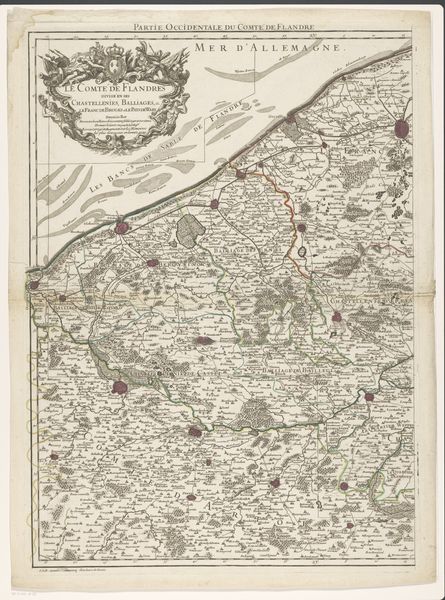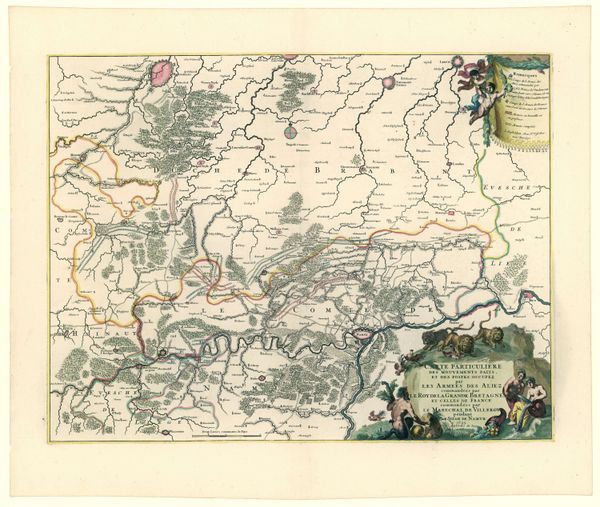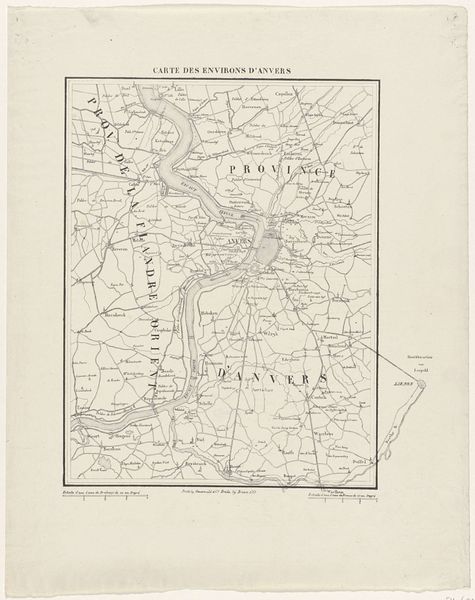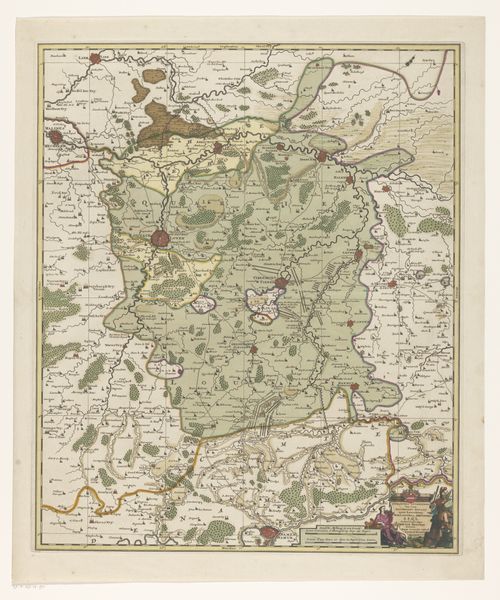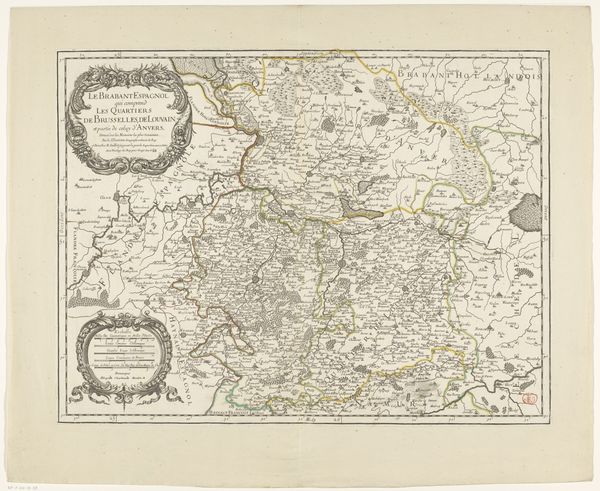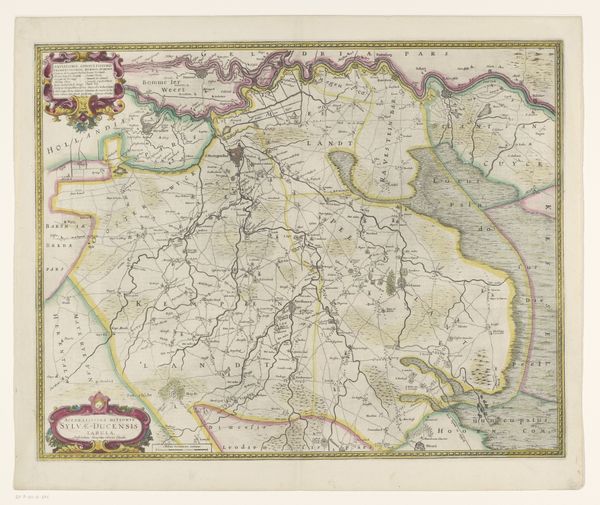
print, engraving
old engraving style
pencil
geometric
history-painting
academic-art
engraving
Dimensions: height 640 mm, width 505 mm
Copyright: Rijks Museum: Open Domain
Editor: This is Pieter Willem Marinus Trap's "Kaart van de Nederlanden in de Romeinse tijd," made between 1855 and 1857. It’s an engraving, quite detailed; it almost feels like a photograph, capturing a moment frozen in time, but of course, it’s a construction. What do you see when you look at this piece? Curator: I'm drawn to the material process. Think about the labour involved in producing this detailed engraving. It’s not just about representing the Netherlands; it's about a specific kind of industrial and intellectual labour deployed in the service of constructing a particular narrative of nationhood through historical visualization. How does this specific medium, this printmaking process, inform our understanding of 19th-century historical consciousness? Editor: That's a great point! I was so focused on the map itself, the "historical consciousness" piece, that I hadn't considered the actual physical making of it and how that influenced its reception. The fact that it's a print suggests it was intended for wider distribution. Curator: Exactly! So, we must think about who this map was made for, the intended audience. Were these maps meant for classrooms? For scholars? For a public hungry for images reinforcing a specific idea of Dutch heritage? It points us to broader social and economic systems supporting its production and consumption. Think about the paper, the ink, the printing press. What statement about Dutch industriousness does its material existence create? Editor: So, you’re saying understanding the "means of production" is as important as understanding the "means of representation" in something like this? Curator: Precisely! The material process embeds a political statement. By thinking through labour, industrial process, and even consumerism, we start to unpack this image's deeper significance beyond simply being a historical artifact. It's not only the depiction of land but it's about the hands that produced that depiction, too. Editor: I hadn’t considered that, viewing the print as an object and process, not solely for the image portrayed. Curator: Reflecting on materiality illuminates the relationship between artistic creation, industry, and social life.
Comments
No comments
Be the first to comment and join the conversation on the ultimate creative platform.
